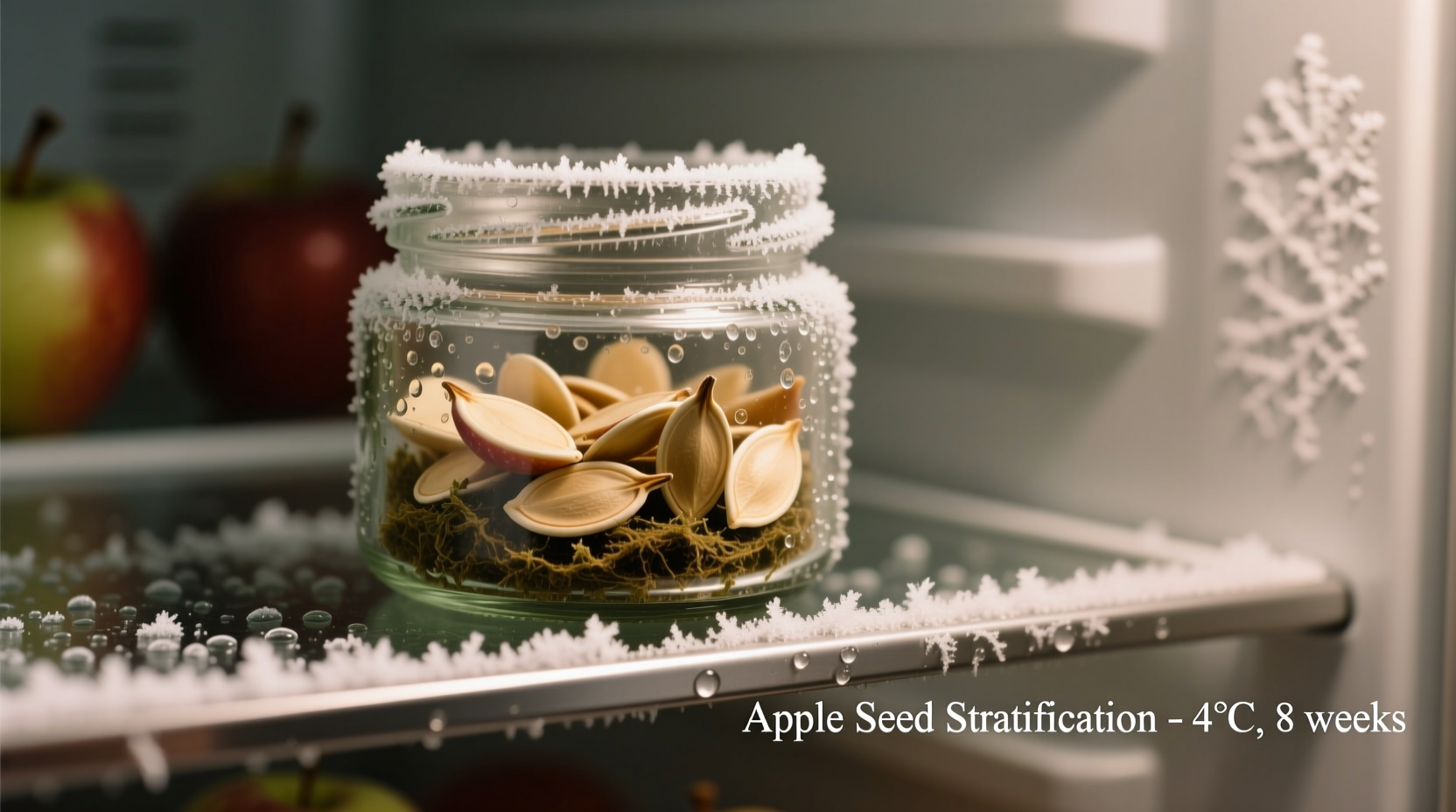Thinking about growing an apple tree from seed? While it's possible to cultivate an apple tree from a pip, most home gardeners don't realize the significant limitations. Unlike many plants, apple seeds don't "come true"—meaning the resulting tree will produce fruit completely different from the apple you ate. This comprehensive guide walks you through the entire process while setting realistic expectations based on horticultural science.
Why Most Apple Trees Aren't Grown From Seed
Commercial orchards and nurseries almost exclusively use grafted trees for good reason. Apple genetics are highly diverse due to cross-pollination, creating what horticulturists call "extreme heterozygosity." According to USDA Agricultural Research Service studies, only about 1 in 10,000 seedling apples will be commercially viable or resemble any known variety. This genetic lottery means your seedling could produce anything from inedible fruit to something extraordinary—but statistically, it's unlikely to match the apple you started with.
| Propagation Method | Time to Fruit | Fruit Quality | Genetic Reliability |
|---|---|---|---|
| Seed-grown tree | 7-10 years | Highly variable | 0% (new genetic combination) |
| Grafted tree | 2-4 years | Identical to parent | 100% (clonal reproduction) |
When Growing From Seed Makes Sense
Despite the challenges, growing from seed has valid purposes:
- Creating rootstock - Many home orchardists grow seedlings specifically as rootstock for grafting known varieties
- Breeding projects - Developing new apple varieties takes decades but starts with seed propagation
- Educational value - Excellent for teaching children about plant life cycles
- Hobby cultivation - Enjoying the process regardless of fruit outcome
Penn State Extension research shows that hobbyists who approach seed propagation with realistic expectations report higher satisfaction. "Treat it as a botanical experiment rather than a fruit production method," advises Dr. Greg Peck, apple specialist at Cornell University.
Seed Selection and Preparation: The Critical First Step
Not all apple seeds work equally well. Follow these evidence-based selection criteria:
- Choose disease-resistant varieties - Heritage or heirloom apples often have better genetic diversity
- Use fresh seeds - Seeds lose viability quickly; plant within 2 weeks of extraction
- Collect multiple seeds - Cornell studies show germination rates range from 30-70% depending on variety
- Avoid grocery store apples - Many commercial varieties have poor germination rates
Proper seed extraction matters too. Rinse seeds thoroughly under cool water to remove all fruit residue, which contains germination inhibitors. Air-dry on paper towel for 24 hours before proceeding to stratification.
The Essential Cold Stratification Process
Apple seeds require a period of cold, moist conditions to break dormancy—a process called stratification. University of Minnesota horticulture research confirms that skipping this step results in near-zero germination.
Here's the scientifically validated method:
- Mix seeds with slightly damp peat moss or vermiculite
- Place in labeled plastic bag with small air hole
- Store in refrigerator (33-40°F / 1-4°C) for 60-120 days
- Check weekly for mold or premature sprouting
The required duration varies by apple type:
- Cold-hardy varieties (e.g., McIntosh): 100-120 days
- Moderate climate varieties (e.g., Gala): 80-100 days
- Warm climate varieties (e.g., Anna): 60-80 days

Germination and Early Seedling Care
After stratification, plant seeds 1/2 inch deep in seed-starting mix. Maintain these conditions:
- Temperature: 65-75°F (18-24°C) soil temperature
- Light: 12-16 hours of bright, indirect light daily
- Moisture: Consistently moist but not soggy soil
- Timeframe: Germination typically occurs in 1-6 weeks
When seedlings develop their second set of true leaves, transplant to 4-inch pots. Use a balanced, slow-release fertilizer at half strength. Rotate pots regularly to prevent leaning toward light sources—a common mistake among beginners that creates weak stems.
Transplanting to Your Garden
Wait until after your last frost date and when seedlings reach 6-12 inches tall. Follow these planting guidelines from the Royal Horticultural Society:
- Select a sunny location with at least 6-8 hours of direct sun
- Prepare soil with 3-4 inches of compost worked to 18-inch depth
- Dig hole twice as wide as root ball but same depth
- Plant with graft union (if present) 2-4 inches above soil line
- Water thoroughly and apply 2-3 inches of mulch
Space standard trees 15-20 feet apart, dwarf varieties 8-10 feet. Contrary to popular belief, adding fertilizer to the planting hole can damage young roots—wait until the following growing season.
Long-Term Care and Realistic Expectations
Patience is essential. While grafted trees produce fruit in 2-4 years, seed-grown trees typically take 7-10 years to bear their first crop. During this time:
- Water deeply once weekly during dry periods
- Prune annually in late winter to establish strong structure
- Monitor for common pests like codling moth and apple scab
- Consider grafting a known variety onto your seedling at 2-3 years
Remember that your tree's fruit characteristics won't be known until it first fruits—a decade-long botanical surprise. Many home growers find value in the journey itself, appreciating the tree's beauty, flowers, and shade long before fruit appears.
When to Choose Grafted Trees Instead
For most home fruit production goals, grafted trees are the practical choice. Benefits include:
- Guaranteed fruit characteristics matching the named variety
- Earlier fruit production (2-4 years vs 7-10 years)
- Dwarfing rootstocks for smaller spaces
- Disease-resistant varieties available
Consider growing from seed if you're interested in the botanical process, want rootstock for grafting, or are conducting breeding experiments. For reliable fruit production, invest in a grafted tree from a reputable nursery.











 浙公网安备
33010002000092号
浙公网安备
33010002000092号 浙B2-20120091-4
浙B2-20120091-4